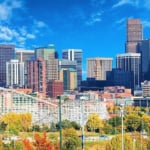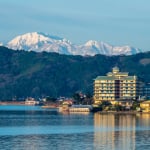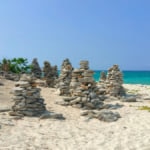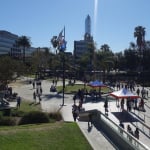Name: Omaezaki Lighthouse
Address: 1581 Omaezaki, Omaezaki City, Shizuoka Prefecture
Official Website: http://www.omaezaki.gr.jp/contents/detail.html?s=1087
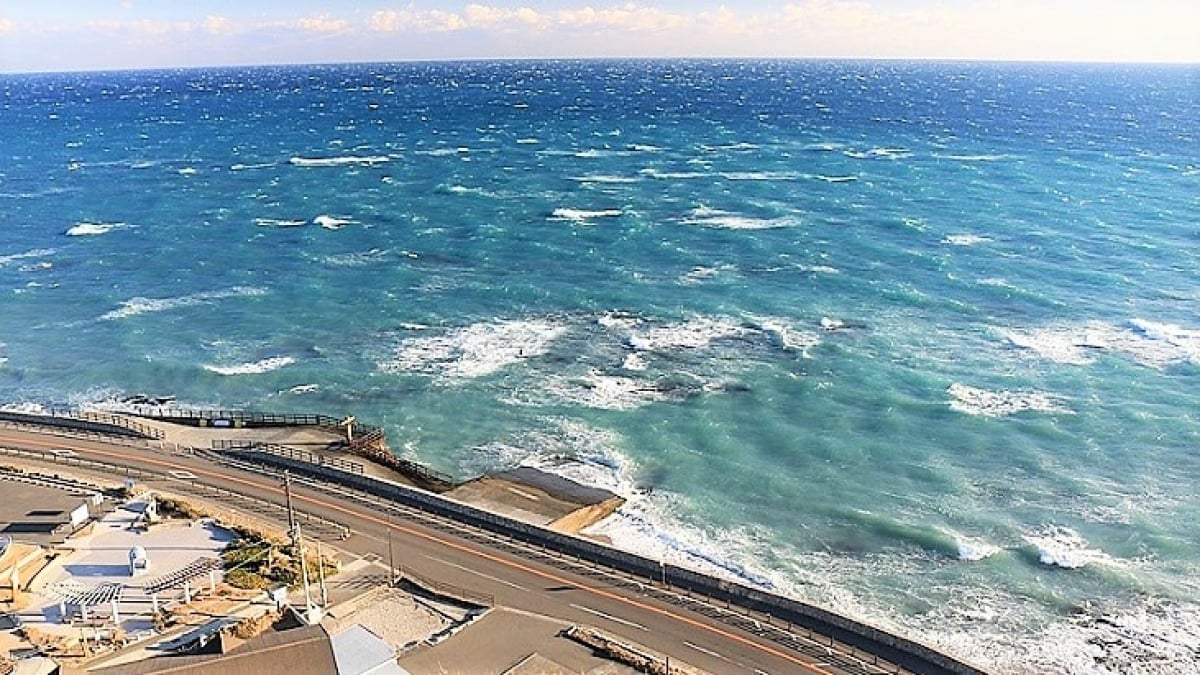
11 must-visit tourist spots to fully enjoy Omaezaki City! Packed with attractions
Omaezaki City, located at the southernmost tip of Shizuoka Prefecture, is a place blessed with numerous tourist attractions. It is often swept by the strong coastal winds of Enshu Nada, and along its shoreline, you can see multiple wind turbines generating power. The city also features sand dunes and is known as a sacred spot for surfing. Additionally, Omaezaki City enjoys long hours of sunlight, making it an ideal location for cultivating fruits such as strawberries and melons, as well as tea farming.
To help you fully experience all that Omaezaki City has to offer, we have carefully selected 11 must-visit tourist spots. These include locations that are part of the legendary "Enshu Seven Wonders," breathtaking scenic spots, and places where you can indulge in Omaezaki’s gourmet delights. With so much to see and do, it is impossible to cover everything in just one day. However, it is definitely worth visiting multiple times to explore all that this charming city has to offer.
table of contents
[x] close
11 must-visit tourist spots to fully enjoy Omaezaki City! Packed with attractions
1. Omaezaki Lighthouse
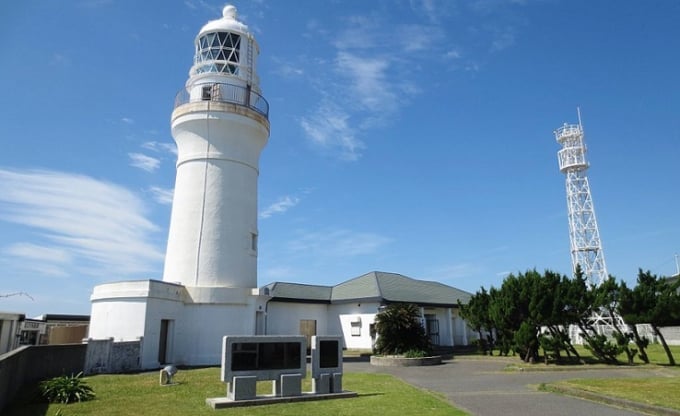
Omaezaki Lighthouse is a white lighthouse located at the tip of Omaezaki. On a clear day, its bright white color stands out vividly against the deep blue sky, making it look like a postcard scene. The lighthouse was built in 1874 by British engineer R.H. Branton, over 130 years ago, and has since continued to safeguard the seas. Visitors can explore the inside of the lighthouse, and by climbing the spiral staircase to the top, they can enjoy a 360-degree panoramic view of the Izu Peninsula, Mount Fuji, the Southern Alps, and Enshu Nada.
It is a place where you can truly appreciate the phrase "the Earth is round." The entrance fee is 200 yen for adults, while children can enter for free (as of November 2016). The lighthouse is accessible by car, about 30 minutes from the Sagara-Makinohara IC on the Tomei Expressway or about 35 minutes from the Yoshioka IC. While driving is the most convenient way to get there, parking is limited. The lighthouse is open for visits during the New Year holidays, but it is closed on bad weather days, so checking the weather forecast beforehand is recommended.
2. Omaezaki Marine Park
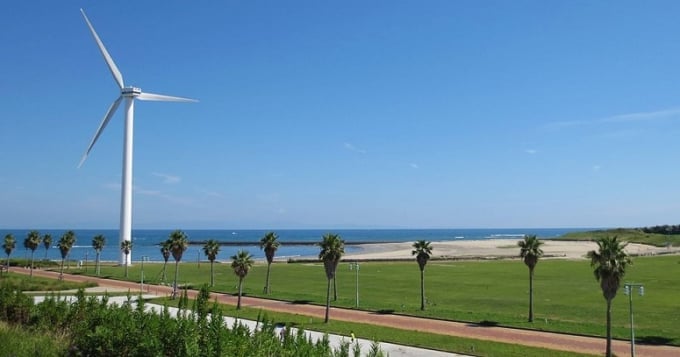
Marine Park Omaezaki is a seaside park located on the northern side of the tip of Omaezaki, adjacent to "Nabura Market" and Omaezaki Fishing Port. Its tagline is "A Theme Park of Wind, Green, and Sea." True to this, the park features "Kurukuru," a wind power station representing wind, a vast 3.5-hectare lawn field and a 2.2-hectare auto camping ground representing green, and a "Sea Terrace" in the center that separates an east beach with a swimming area and a west beach offering various marine activities.
This is a place where you can fully experience all that Omaezaki has to offer. The park is accessible by car, about 30 minutes from the Sagara-Makinohara IC on the Tomei Expressway. There are an impressive 460 parking spaces, and parking is free. The auto camping area is open from April to October, with each 8×8 meter section available for 3,000 yen per night, accommodating up to six people (as of November 2016).
Name: Marine Park Omaezaki
Address: Minato, Omaezaki City, Shizuoka Prefecture
Official Website: http://www.omaezaki.gr.jp/contents/detail.html?s=1032
3. Omaezaki Long Beach
Omaezaki Long Beach refers to the entire southern coastal stretch at the tip of Omaezaki. It is one of Japan’s premier spots for marine sports such as surfing, bodyboarding, and windsurfing, as it offers "good waves and good wind" all year round. It is highly praised by professional marine sports athletes worldwide and is frequently chosen as a venue for international surfing, windsurfing, and bodyboarding competitions, earning it the nickname "Mecca of Surfing." The beach is accessible by car, about 25 minutes from the Sagara-Makinohara IC on the Tomei Expressway. While parking is available, it can be difficult to find an empty spot due to the large number of visitors.
The beach is equipped with restrooms, vending machines, and water stations for washing boards. Notably, the restroom buildings are designed to resemble sea turtles, as this beach is one of Japan's most famous sea turtle nesting sites. Even the male and female restroom signs feature sea turtles riding surfboards. However, since the tide can carry you quickly into Suruga Bay, it is important to be cautious when enjoying the water.
Name: Omaezaki Long Beach
Address: Omaezaki, Omaezaki City, Shizuoka Prefecture
Official Website: https://goo.gl/0NMx3w
4. Sakuragaike Pond
Sakura-ga-Ike Pond is a deeply mysterious sightseeing spot, featuring dark blue waters surrounded by a dense, primeval forest. This pond was formed when sand dunes blocked a valley, creating a natural water body. It is also one of the legendary "Enshu Seven Wonders."
During the Heian period, when Buddhist end-of-the-world beliefs were widespread, a renowned monk lamented the state of the world and sought enlightenment to save all beings. After rigorous training, he transformed into a dragon god and submerged himself in this pond to appeal directly to Buddha. The deep, unfathomable waters of the pond exude an aura that makes the legend feel real. Nearby, at Ikemiya Shrine, an annual ritual called "Ohitsu Osame" is still held to honor the submerged monk and pray for a bountiful harvest.
Despite its mystical reputation, the pond is also a peaceful place where visitors can relax and feed the numerous carp. Specially sold wheat gluten snacks attract the fish in great numbers, creating a charming and tranquil scene. Sakura-ga-Ike is about 25 minutes by car from the Sagara-Makinohara IC on the Tomei Expressway, and free parking is available.
Name: Sakura-ga-Ike Pond
Address: 5162 Sakura, Omaezaki City, Shizuoka Prefecture
Official Website: https://goo.gl/0GJx4Z
5. Hamaoka Sand Dunes
Hamaoka Sand Dunes stretch along the southern coast of Omaezaki, overlooking Enshu Nada. The region has long been known for its fierce winds, called the "Enshu Oroshi," which pushed sand from the Tenryu River inland, forming the dunes. In the past, these winds buried villages and destroyed crops, but stabilization efforts in the Meiji and Taisho eras finally prevented further sand movement, shaping the dunes into their present form.
However, some locals and frequent visitors claim that the dunes are still shifting and shrinking. Today, numerous wind turbines dot the landscape, creating a unique and spectacular sight. The area is also home to the "Wave Goblin" statue, commemorating one of the Enshu Seven Wonders. According to legend, a captured wave goblin (a sea spirit) promised to warn fishermen of approaching storms by making wave sounds after being released.
The dunes can be reached by bus (35 minutes from Kikugawa Station) or by car (30 minutes from the Kikugawa IC on the Tomei Expressway). Parking is free.
Name: Hamaoka Sand Dunes
Address: Ikeshinden, Omaezaki City, Shizuoka Prefecture
Official Website: https://goo.gl/ruvb1t
6. Shirasuna Park
Shirasuna Park is adjacent to Hamaoka Sand Dunes and covers a vast area divided into different zones. Unlike a traditional playground, this park is more suited for scenic strolls and nature appreciation.
The park features 230 Kawazu cherry trees along its walking paths. These cherry trees bloom from January to February and have a more vibrant pink color than the more common Somei Yoshino cherry blossoms. The name "Kawazu cherry" originates from the discovery of its original tree in Kawazu Town, Shizuoka Prefecture. While the cherry trees in Shirasuna Park are still relatively young, the pathways turn beautifully pink in spring.
Additionally, around the gourd-shaped pond, 20,000 iris flowers bloom in white, purple, and lilac hues in June. Visitors can also enjoy muscari, tulips, and canola flowers throughout the year, making it a must-visit for flower enthusiasts. The park is about 30 minutes by car from the Kikugawa IC on the Tomei Expressway, and parking is free.
Name: Shirasuna Park
Address: 9186-216 Ikeshinden, Omaezaki City, Shizuoka Prefecture
Official Website: https://goo.gl/PFvT0H
7. Omaezaki Cape Park
Omaezaki Cape Park consists of a 1.5 km scenic walking path located just 10 minutes west of Omaezaki Lighthouse on foot. The theme of the park is "Harmony Between the Sea and the Land," and visitors will first encounter the "Earth Viewing Platform," where the 180-degree ocean panorama truly gives the impression that the Earth is round. Along the path, you’ll also find "Nezumi-zuka," one of the legendary Enshu Seven Wonders. This is the grave of a giant rat that transformed into a traveling monk to sneak into a temple and eat its head priest. However, the monk was killed by the priest’s cat, and its body was thrown onto the shore. Later, the rat appeared in the priest’s dream, promising to protect sailors and bless them with abundant catches if it received a proper burial.
Continuing along the path, visitors reach the "Sunset and Wind Viewing Platform," where a beautifully gleaming white statue called the "Sound of Waves" stands against the backdrop of the sea and sky. This spot has been designated as a "Lover’s Sanctuary," making it a popular place for couples. The breathtaking sight of the sun sinking into the ocean has also earned it a place in the Top 100 Sunsets of Japan, with many photos shared on social media.
Name: Omaezaki Cape Park
Address: 1581 Omaezaki, Omaezaki City, Shizuoka Prefecture
Official Website: https://goo.gl/UphzV3
8. Omaezaki Seafood Nabura Market
At Omaezaki Seafood Nabura Market, visitors may find themselves humming the catchy theme song, "Nabbura Market, Nabura Market~" which lingers in the mind. The term "Nabura" means "a school of bonito" in the Omaezaki region. A giant model of a bonito fish named "Nabura-kun" stands at the market’s entrance, setting the tone for the seafood-focused experience inside. The market is divided into two sections: the Kaiyukan shopping area, where visitors can buy fresh seafood such as bonito, tuna, whitebait, and dried fish, and the Shokuyukan dining area, which serves sashimi, seared fish, sushi, and rice bowls featuring freshly caught local seafood.
A unique specialty here is Shirasu Ice Cream, a gelato made with tiny whitebait, offering a salty-sweet flavor that surprises many. The market is about 25 minutes by car from the Sagara-Makinohara IC on the Tomei Expressway. It has a large parking area with space for 10 buses and 200 regular cars, and parking is free. If you're looking for fresh and delicious Omaezaki seafood, this is the place to go.
Name: Omaezaki Seafood Nabura Market
Address: 6099-7 Minato, Omaezaki City, Shizuoka Prefecture
Official Website: http://nabula.jp/
9. Omaezaki Municipal Pool Suisui Park Pururu
Omaezaki Civic Pool Suisui Park Pururu is a large recreational facility featuring six indoor swimming lanes. During the summer season, the outdoor area also opens, offering a lazy river, an 85-meter-long waterslide, a beach pool, and a kids' pool, making it enjoyable for both adults and children. The bright and spacious indoor pool is surrounded by large windows, giving it a refreshing atmosphere.
Beyond swimming, the facility includes a gym, dance studio, traditional tatami rooms, and even an outdoor hot spring bath—perfect for unwinding after a day of fun. The facility operates from 10:00 AM to 9:00 PM (except in July and August when it opens at 9:30 AM). Entrance fees are 600 yen for adults and 300 yen for children and seniors over 70 years old (as of November 2016). However, children under three are not allowed to use the facilities. Access is about 30 minutes by car from the Sagara-Makinohara IC via Prefectural Route 473 toward Hamaoka. The facility has free parking for up to 270 cars.
Name: Omaezaki Civic Pool "Suisui Park Pururu"
Address: 1581-1 Miyauchi, Omaezaki City, Shizuoka Prefecture
Official Website: http://www.maotv.ne.jp/pururu/sisetusyoukaipururu.html
10. Kaze no Marche Omaezaki
Kaze no Marché Omaezaki is a relatively new tourist spot, having opened in 2014. It serves as a local farmers' market where fresh vegetables and fruits such as strawberries, tomatoes, and melons—grown by Omaezaki farmers—are sold. One of the highlights here is the Omaezaki Tsuyuhikari tea brand, a locally cultivated green tea. The facility also includes an event plaza and an exhibition greenhouse where visitors can observe hydroponically grown tomatoes—cultivated entirely in water without soil. At Kitchen Omaezaki, guests can enjoy dishes made from fresh, locally sourced ingredients.
One highly recommended dish is the Enshu Omaezaki Yumesaki Beef Hayashi Rice. This dish features Yumesaki Beef, a high-quality breed of black Wagyu, known for its rich, flavorful marbling and tenderness. The beef has won numerous awards, and its addition to Hayashi Rice (a Japanese-style hashed beef dish) creates an outstandingly delicious experience. The market is about 25 minutes by car from the Sagara-Makinohara IC on the Tomei Expressway. Free parking is available for 96 cars. Keep in mind that while the market opens early at 9:00 AM, it also closes early at 6:30 PM.
Name: Kaze no Marché Omaezaki
Address: 4384-1 Goto, Omaezaki City, Shizuoka Prefecture
Official Website: http://www.omaezaki-marche.com/
11. Omaezaki Fruit Park
Due to its long hours of sunlight, Omaezaki is known as an ideal location for strawberry farming. One of its specialties is the Omaezaki Fruit Park, where visitors can enjoy an all-you-can-eat strawberry-picking experience for 30 minutes. The strawberries are grown in greenhouses and are available from early January to late April. The park cultivates a variety called Kaorino, originally developed in Mie Prefecture. True to its name, Kaorino strawberries are known for their sweet, fragrant aroma and juicy taste.
The greenhouses are designed with a two-tiered growing system, allowing visitors to pick strawberries without bending down. The wide pathways make it accessible for strollers and wheelchairs. The park operates from 9:00 AM to 4:00 PM. Entry fees include a cup of condensed milk for dipping, and the cost varies by season. From January to early March, prices are 1,600 yen for elementary school children and above, 1,400 yen for younger children, and free for children under three. Freshly picked strawberries are also available for purchase at the souvenir shop.
Name: Omaezaki Fruit Park
Address: 2578-1 Goto, Omaezaki City, Shizuoka Prefecture
Official Website: http://omaezaki-fruit-farm.com/index.html
◎ Summary
This list introduces 11 must-visit tourist spots in Omaezaki. When most people think of Omaezaki, the sea likely comes to mind first—offering activities such as swimming, marine sports, and breathtaking panoramic ocean views. These attractions can be enjoyed by solo travelers, couples, or families alike.
However, Omaezaki is more than just the sea. From mystical lakes with dragon legends, historic spots tied to folklore, and gourmet seafood markets, to stunning flower parks and unique local cuisine, there are countless fascinating places to explore. In fact, many incredible locations had to be left out of this list. Omaezaki is a destination worth visiting more than once—so why not plan a trip and experience its many charms firsthand?
RELATED ARTICLES
REGIONS
CATEGORIES
FEATURED ON Guide
-
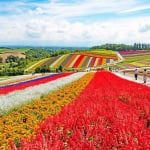
Where will you go for the summer vacation? Introducing recommended spots for domestic travel
-
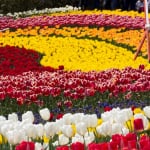
Kaizu City’s Recommended 7 Tourist Spots. Enjoy the Culture and History Nurtured by Wajū!
-
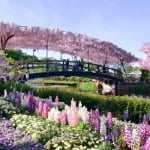
What Makes Ashikaga Flower Park So Special? A Treasure Trove of Photo-Worthy Spots!
-
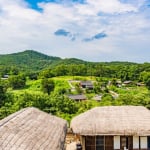
600 Years of Radiant Tradition: Korea’s Historic Villages of Hahoe and Yangdong
-
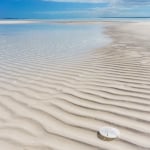
Two-Colored Seas and a Pink Beach! 4 Must-Visit Spots in North Eleuthera
MOST POPULAR ON Guide
-
 1
1Doha: Must-see Attractions in the Capital of Qatar
-
 2
2Toronto: 10 Things to do in this Picturesque Canadian City
-
 3
3Amarillo: A City Famous for It’s Amazing Canyons, Great History and Music
-
 4
4South Korea: Dazzling Scenery, Rich Culture and Fascinating History
-
 5
5Kuwait: A Country in Middle East Asia Famous for Hot Sand Dunes and Stunning Cityscape

